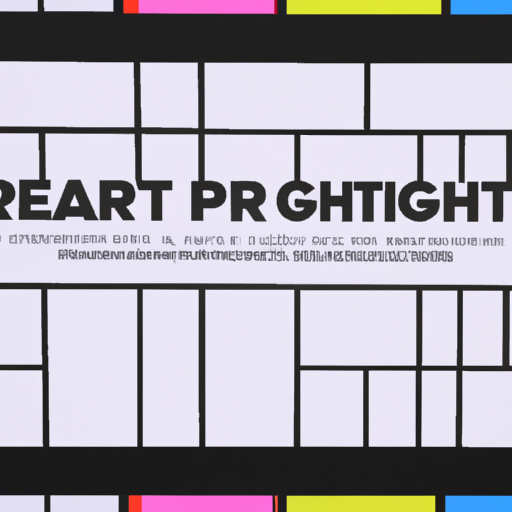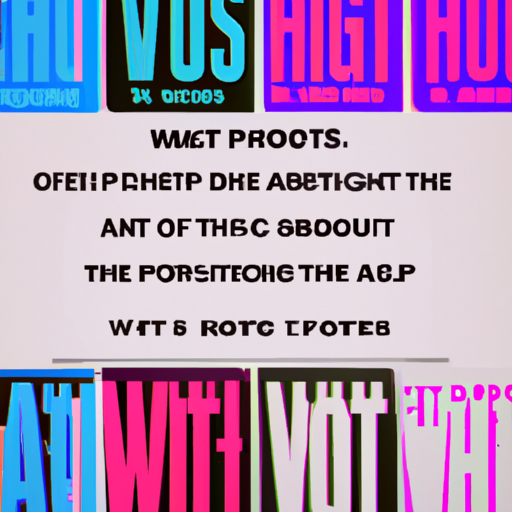
-
Table of Contents
- Typography in Package Design: Choosing the Right Fonts
- The Importance of Typography in Package Design
- Factors to Consider When Choosing Fonts for Package Design
- 1. Brand Personality
- 2. Legibility
- 3. Target Audience
- 4. Industry Trends
- 5. Font Pairing
- Case Studies: Successful Typography in Package Design
- 1. Coca-Cola
- 2. Apple
- 3. Oreo
- Conclusion
Typography in Package Design: Choosing the Right Fonts

Typography plays a crucial role in package design. It not only communicates important information but also conveys the brand’s personality and influences consumer perception. Choosing the right fonts for package design requires careful consideration of various factors, including legibility, brand identity, target audience, and industry trends. In this article, we will explore the importance of typography in package design and provide valuable insights on how to choose the right fonts.
The Importance of Typography in Package Design
Typography is more than just selecting a font; it is about creating a visual hierarchy and establishing a connection with the consumer. Here are some reasons why typography is crucial in package design:
- Brand Identity: Typography helps to establish and reinforce a brand’s identity. The right font can evoke emotions, convey the brand’s values, and differentiate it from competitors.
- Legibility: Package design should prioritize legibility to ensure that consumers can easily read and understand the information. The right font choice can enhance legibility and make the packaging more user-friendly.
- Visual Appeal: Typography adds visual interest to package design. It can create a sense of harmony, balance, and aesthetics, making the packaging more visually appealing and memorable.
- Communication: Typography helps to communicate important information such as product names, ingredients, and instructions. The right font choice can enhance the clarity and effectiveness of this communication.
Factors to Consider When Choosing Fonts for Package Design
When selecting fonts for package design, it is essential to consider various factors to ensure the fonts align with the brand and effectively communicate with the target audience. Here are some key factors to consider:
1. Brand Personality
The font choice should align with the brand’s personality and values. For example, a luxury brand may opt for elegant and sophisticated fonts, while a playful and youthful brand may choose more whimsical and fun fonts. Understanding the brand’s personality is crucial in selecting fonts that resonate with the target audience.
2. Legibility
Legibility is of utmost importance in package design. The fonts should be easily readable, even from a distance or in small sizes. Avoid overly decorative or complex fonts that may hinder legibility. Test the fonts in different sizes and ensure they maintain their legibility in various contexts.
3. Target Audience
Consider the demographics and preferences of the target audience. Different age groups, cultures, and industries may have varying preferences for fonts. For example, a product targeting young children may benefit from using playful and bold fonts, while a product targeting professionals may require more formal and clean fonts.
4. Industry Trends
Stay updated with the latest typography trends in the industry. While it is essential to create a unique and timeless design, incorporating current trends can help the packaging feel modern and relevant. However, be cautious not to follow trends blindly, as they may quickly become outdated.
5. Font Pairing
Consider using multiple fonts to create a visual hierarchy and add interest to the package design. Pairing fonts with contrasting styles, such as a serif font with a sans-serif font, can create a harmonious and balanced composition. Ensure that the fonts complement each other and work well together.
Case Studies: Successful Typography in Package Design
Let’s explore some real-life examples of successful typography in package design:
1. Coca-Cola
Coca-Cola’s iconic logo is a prime example of effective typography in package design. The unique script font instantly evokes a sense of nostalgia and familiarity. The flowing curves and distinct letterforms make it easily recognizable, even without the brand name. Coca-Cola’s typography has become synonymous with the brand’s identity and has stood the test of time.
2. Apple
Apple’s packaging is known for its minimalist and clean design. The use of a simple sans-serif font, such as Helvetica, aligns with the brand’s sleek and modern image. The typography on Apple’s packaging is consistent across all products, creating a cohesive and recognizable brand identity.
3. Oreo
Oreo’s package design incorporates a playful and bold typography that appeals to its target audience, which includes both children and adults. The use of a custom typeface with rounded edges adds a sense of fun and approachability to the packaging, reflecting the brand’s personality.
Conclusion
Typography plays a vital role in package design, influencing brand perception, legibility, and visual appeal. When choosing fonts for package design, it is crucial to consider factors such as brand personality, legibility, target audience, industry trends, and font pairing. By carefully selecting the right fonts, package designers can create visually appealing and effective packaging that resonates with consumers and communicates the brand’s message effectively.
